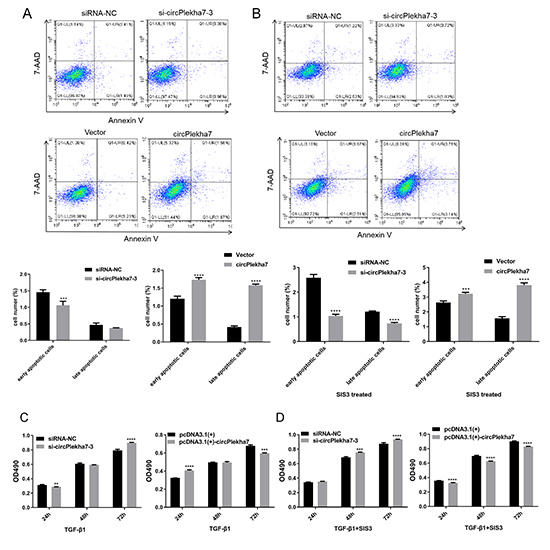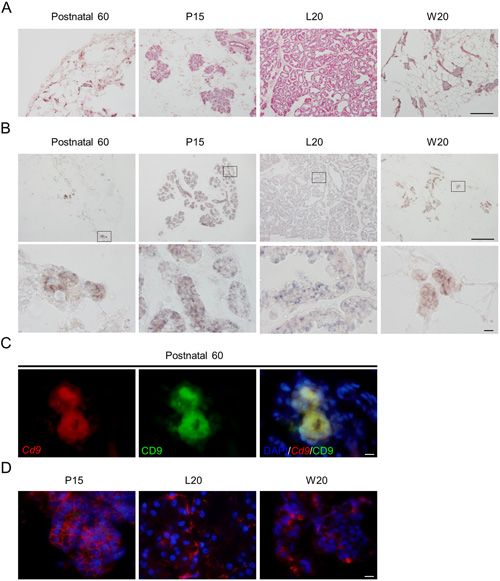- |<
- <
- 1
- >
- >|
-
原稿種別: Original Article
2020 年 66 巻 6 号 p. 493-504
発行日: 2020年
公開日: 2020/12/22
[早期公開] 公開日: 2020/08/15PDF形式でダウンロード (5263K) -
原稿種別: Original Article
2020 年 66 巻 6 号 p. 505-514
発行日: 2020年
公開日: 2020/12/22
[早期公開] 公開日: 2020/09/08PDF形式でダウンロード (3715K) -
 原稿種別: Original Article
原稿種別: Original Article
2020 年 66 巻 6 号 p. 515-522
発行日: 2020年
公開日: 2020/12/22
[早期公開] 公開日: 2020/08/21Editor's pickCover Story: Cluster of differentiation 9 (CD9) forms a complex with CD81, and is a member of the tetraspanin superfamily. Cd9 and Cd81 are highly expressed in breast cancer cells, but their expression in healthy mammary glands remains unclear. Horiguchi et al. reported expression of Cd9 and Cd81 in mammary epithelial cells, with expression levels correlating with mammary gland development (Horiguchi et al. Expression and functions of cluster of differentiation 9 and 81 in rat mammary epithelial cells, pp. 515–522). To examine the functional roles of CD9 and CD81, Horiguchi et al. knocked down Cd9 and Cd81 gene expression using small interfering RNAs (siRNAs) in isolated CD9-positive mammary epithelial cells. They found that siRNAs against Cd9 and Cd81 inhibited estrogen-induced mammary epithelial cell proliferation. These findings provide novel insights into mammary epithelial cell proliferation during pregnancy and lactation, as well as in pathological processes associated with breast cancer.
PDF形式でダウンロード (3237K) -
原稿種別: Original Article
2020 年 66 巻 6 号 p. 523-528
発行日: 2020年
公開日: 2020/12/22
[早期公開] 公開日: 2020/08/31PDF形式でダウンロード (679K) -
原稿種別: Original Article
2020 年 66 巻 6 号 p. 529-538
発行日: 2020年
公開日: 2020/12/22
[早期公開] 公開日: 2020/09/03PDF形式でダウンロード (8333K) -
原稿種別: Original Article
2020 年 66 巻 6 号 p. 539-546
発行日: 2020年
公開日: 2020/12/22
[早期公開] 公開日: 2020/09/08PDF形式でダウンロード (821K) -
原稿種別: Original Article
2020 年 66 巻 6 号 p. 547-554
発行日: 2020年
公開日: 2020/12/22
[早期公開] 公開日: 2020/09/13PDF形式でダウンロード (1153K) -
原稿種別: Original Article
2020 年 66 巻 6 号 p. 555-562
発行日: 2020年
公開日: 2020/12/22
[早期公開] 公開日: 2020/10/14PDF形式でダウンロード (2092K) -
原稿種別: Original Article
2020 年 66 巻 6 号 p. 563-570
発行日: 2020年
公開日: 2020/12/22
[早期公開] 公開日: 2020/10/12PDF形式でダウンロード (1042K) -
原稿種別: Original Article
2020 年 66 巻 6 号 p. 571-578
発行日: 2020年
公開日: 2020/12/22
[早期公開] 公開日: 2020/09/19PDF形式でダウンロード (2195K) -
原稿種別: Original Article
2020 年 66 巻 6 号 p. 579-586
発行日: 2020年
公開日: 2020/12/22
[早期公開] 公開日: 2020/09/24PDF形式でダウンロード (1656K)
-
原稿種別: Technology Report
2020 年 66 巻 6 号 p. 587-592
発行日: 2020年
公開日: 2020/12/22
[早期公開] 公開日: 2020/08/21PDF形式でダウンロード (1351K) -
原稿種別: Technology Report
2020 年 66 巻 6 号 p. 593-598
発行日: 2020年
公開日: 2020/12/22
[早期公開] 公開日: 2020/09/17PDF形式でダウンロード (845K) -
原稿種別: Technology Report
2020 年 66 巻 6 号 p. 599-605
発行日: 2020年
公開日: 2020/12/22
[早期公開] 公開日: 2020/10/03PDF形式でダウンロード (2657K)
- |<
- <
- 1
- >
- >|












